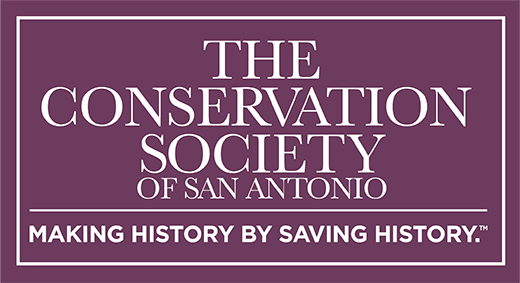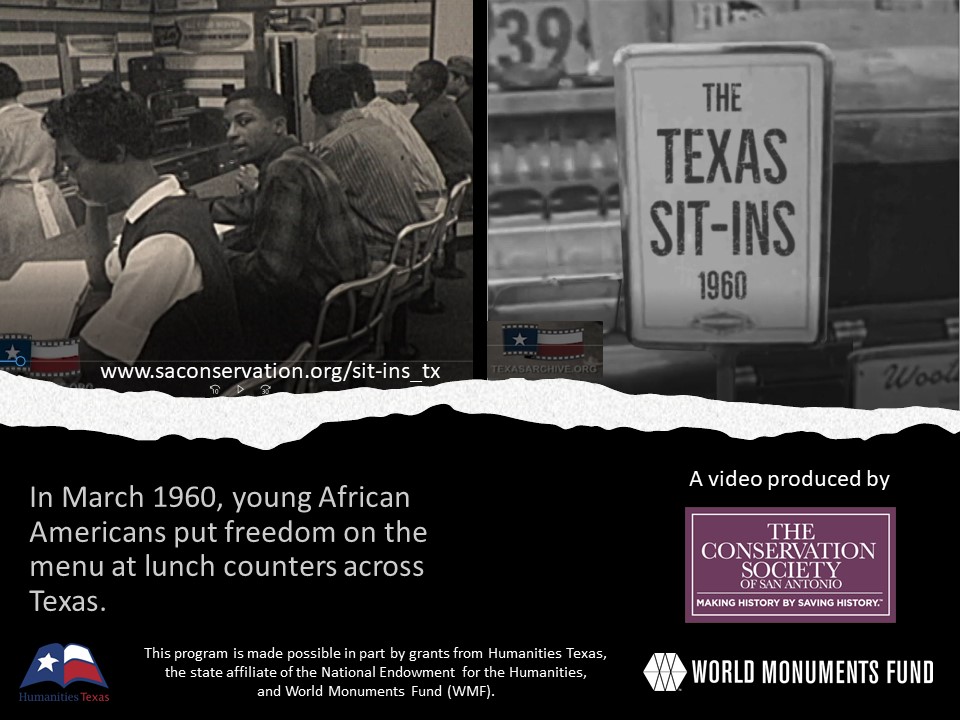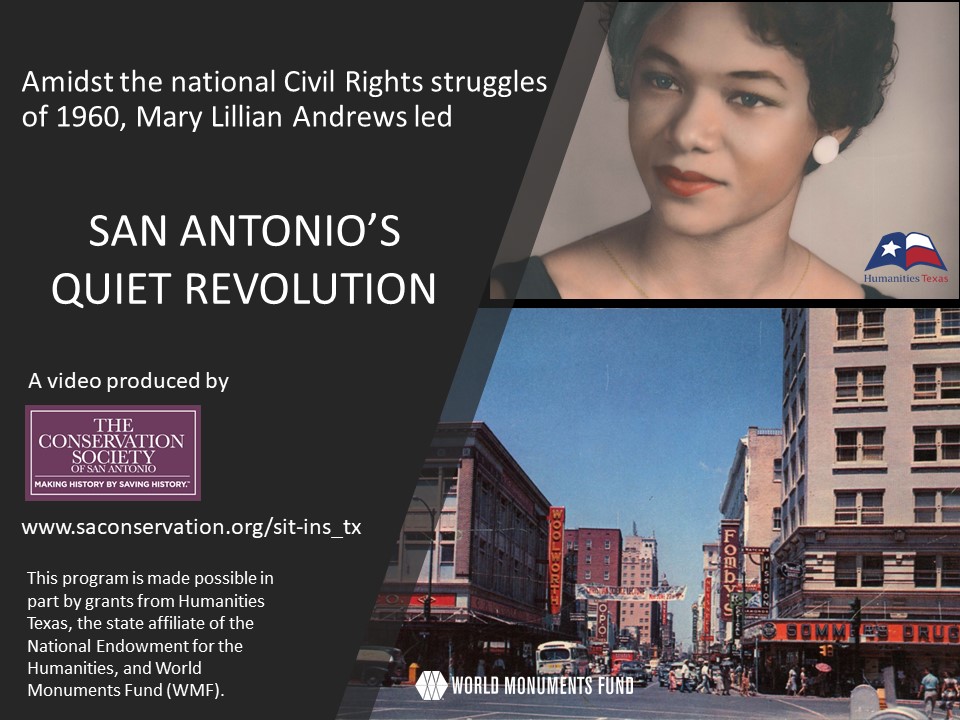The Conservation Society of San Antonio, in partnership with the San Antonio African American Community Archive and Museum, presents a three-video series on the lunch counter sit-ins of 1960. Led by African American students engaging in direct action, this movement sought to end racial segregation at public eating places across the South. These videos tell the story of the Texas protests and how San Antonio achieved the first peaceful, voluntary integration of the national sit-in movement.
The Texas Sit-Ins: Civil Rights Video Series
The Texas Sit-Ins, 1960
Beginning in February, young African Americans helped re-energize the national Civil Rights Movement. Through peaceful sit-ins, they protested racial discrimination at public lunch counters across the South. Texas students quickly took up the cause and led freedom struggles that played out in their state’s big cities and college towns.
Click to Play
San Antonio, 1960: A Quiet Revolution
Mary Lillian Andrews led the local NAACP Youth Council at the age of seventeen. Her request that store managers integrate their lunch counters produced the first peaceful, voluntary integration of the 1960 sit-in movement. San Antonio, Texas became a brief beacon of hope to a nation torn by racial strife.
Click to Play
Public Screening
These videos are available for screening at public events
If you are hosting a free, public event and would like to show these videos, please contact Beth Standifird at bstandifird@saconservation.org.
Thanks to Our Funders

This free video series, “Woolworth and Civil Rights: A First in the South,” is made possible in part by grants from Humanities Texas, the state affiliate of the National Endowment for the Humanities, and World Monuments Fund (WMF). Event screening made possible by a grant from H-E-B.


Any views, findings, conclusions, or recommendations expressed in these videos do not necessarily represent those at Humanities Texas or the National Endowment for the Humanities.


